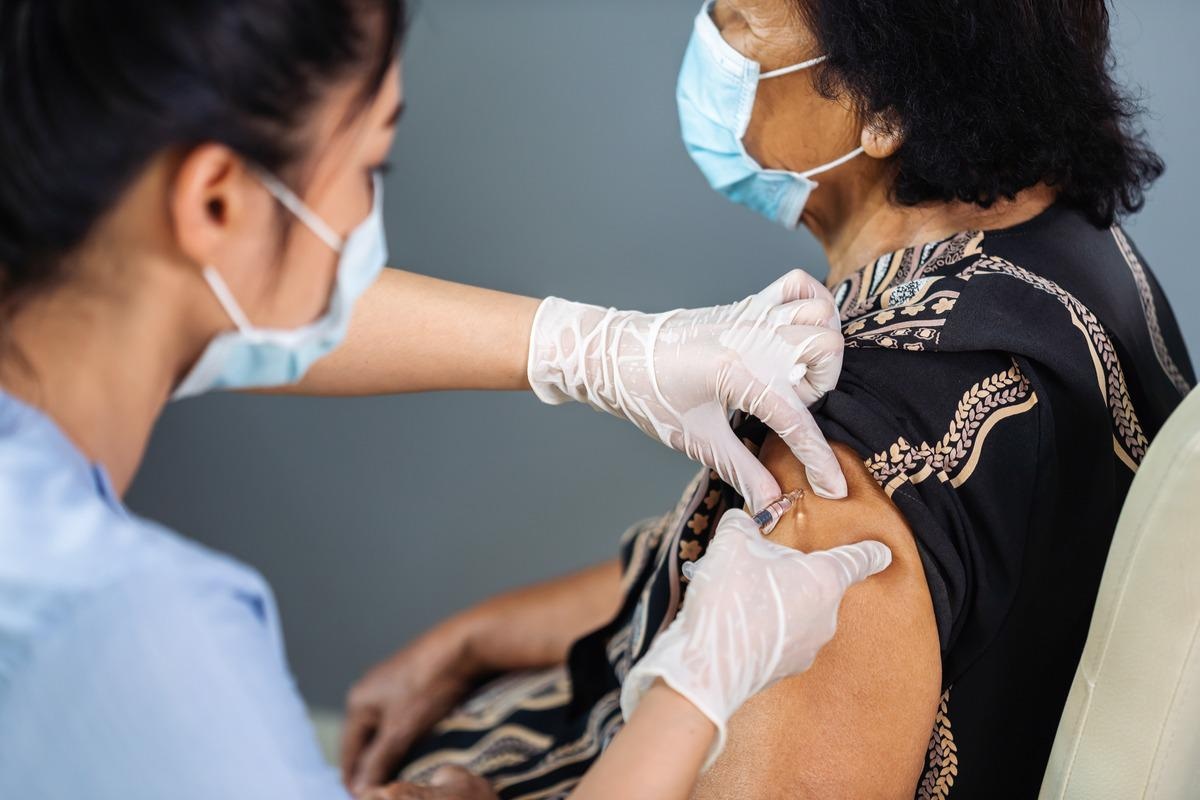As new variants of severe acute respiratory coronavirus 2 (SARS-CoV-2) continue to arise, the rate of vaccine breakthrough infections is on the increase. Many of these variants carry mutations in the spike protein that make immunity acquired through vaccination or past infection less effective.
 Study: Effect of Covid-19 Vaccination on Transmission of Alpha and Delta Variants. Image Credit: BaLL LunLa/Shutterstock
Study: Effect of Covid-19 Vaccination on Transmission of Alpha and Delta Variants. Image Credit: BaLL LunLa/Shutterstock
Researchers from the University of Oxford have been investigating transmission from vaccinated individuals infected with coronavirus disease 2019 (COVID-19).
The study
The researchers observed any over 18s who had contracted asymptomatic or symptomatic COVID-19. Contacts of these people were also eligible for inclusion if they had undergone a PCR test within 10 days of the initial patient receiving one. Only patients who had received a PCR test from one of the three national laboratories that use the same standardized PCR assay were included. All cases were taken from between January and July 2021. Multivariable Poisson regression was used to investigate association between transmission, vaccination status, and vaccine type. They also examined the differences between transmission from different variants. Analyses were adjusted based on many different covariates, including type of exposure, demographic characteristics, local incidence of SARS-CoV-2 and calendar time. Models were refitted to include cycle-threshold values, which indicate viral load, in the index patient.
In total, the scientists gathered data from ~375,000 index patients, and 661,000 contacts of these patients. Out of these, 173,000 of the contacts had undergone PCR testing and 27,000 of these had to be excluded due to incomplete data. Of the remaining contacts, 37% had positive tests, the median age was 34, 57% were female, and exposures were mostly at home (66%), with some at events, visits and workplaces/schools.
In the initial multivariable model, vaccination with BNT162b2 in index patients who were infected with the alpha variant was associated with less positive tests in contacts, with more vaccinations associated with greater decreases. The same trend could be seen with the ChAdOx1 vaccinations, with little significant difference between the two. The delta variant showed higher transmission from index patients than the alpha variant, dependent on the age of the contact. Both vaccines showed similar rates of decreases in transmission when the index patients were infected with the Delta variant, although the partial vaccination was more effective in preventing the spread of delta than alpha. Contacts were only included in the study if they had undergone testing, so vaccine effectiveness cannot be calculated. But, as expected unvaccinated contacts showed the highest rates of positive tests, and in fully vaccinated contacts BNT162b2 showed slightly lower rates of positive tests than ChAdOx1.
Independent of the vaccination status of contacts, for each doubling of the weeks past the initial two weeks post-second vaccination in index patients, the percentage of contacts testing positive increased by a factor of 1.08 in ChAdOx1 index patients and 1.13 in BNT162b2 vaccinated index patients. While the BNT162b2 vaccine does provide protection that wanes more quickly than the protection provided by ChAdOx1, it does seem to protect contacts better during the first 14 weeks.
The scientists discovered multiple other risk factors that were associated with positive PCR tests in contacts, including the type of exposure – generally highest when individuals lived in the same household, and the age of the index patient – older individuals were far more likely to pass COVID-19 on than younger individuals. Contacts were also much more likely to test positive if they were the opposite sex to the index patient, and men were more likely to be infected outside the household than women. Contacts of asymptomatic patients were less likely to test positive for either variant than symptomatic patients, and more contacts who lived in more deprived areas or areas with higher incidences of SARS-CoV-2 were more likely to test positive.
Generally, index patients who were infected with the alpha variant were more likely to have higher Ct values – which suggests lower viral loads – at diagnosis if they had received two doses of either vaccine, compared to the unvaccinated. Asymptomatic and symptomatic index patients almost all had lower Ct values if infected with the Delta variant compared to the Alpha variant.
Conclusion
The authors highlight that their study displays that vaccine breakthrough infections are far less likely to transmit from the index patient to contacts than infections in partially or unvaccinated individuals. However, the reductions in transmission are less effective against the Delta variant compared to the Alpha variant. This information could be essential for epidemiologists and public health policymakers and could help inform future policy.
- David W. Eyre, et al. (2022). Effect of Covid-19 Vaccination on Transmission of Alpha and Delta Variants. New England Journal Of Medicine, January 5, 2022. doi: 10.1056/NEJMoa2116597 https://www.nejm.org/doi/full/10.1056/NEJMoa2116597
Posted in: Medical Science News | Medical Research News | Disease/Infection News
Tags: Assay, Coronavirus, Coronavirus Disease COVID-19, covid-19, CT, immunity, Protein, Public Health, Respiratory, SARS, SARS-CoV-2, Severe Acute Respiratory, Spike Protein, Vaccine

Written by
Sam Hancock
Sam completed his MSci in Genetics at the University of Nottingham in 2019, fuelled initially by an interest in genetic ageing. As part of his degree, he also investigated the role of rnh genes in originless replication in archaea.
Source: Read Full Article
